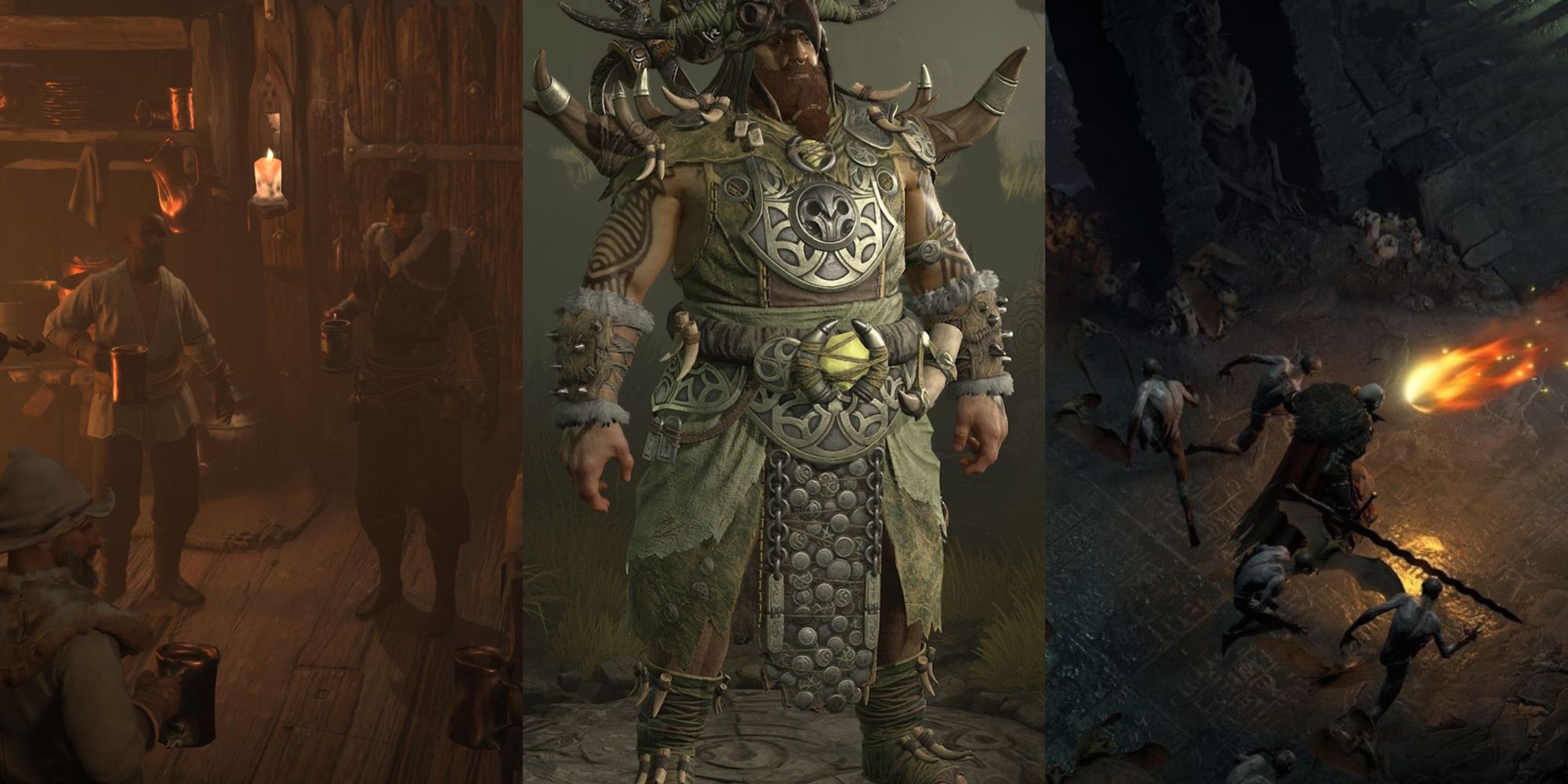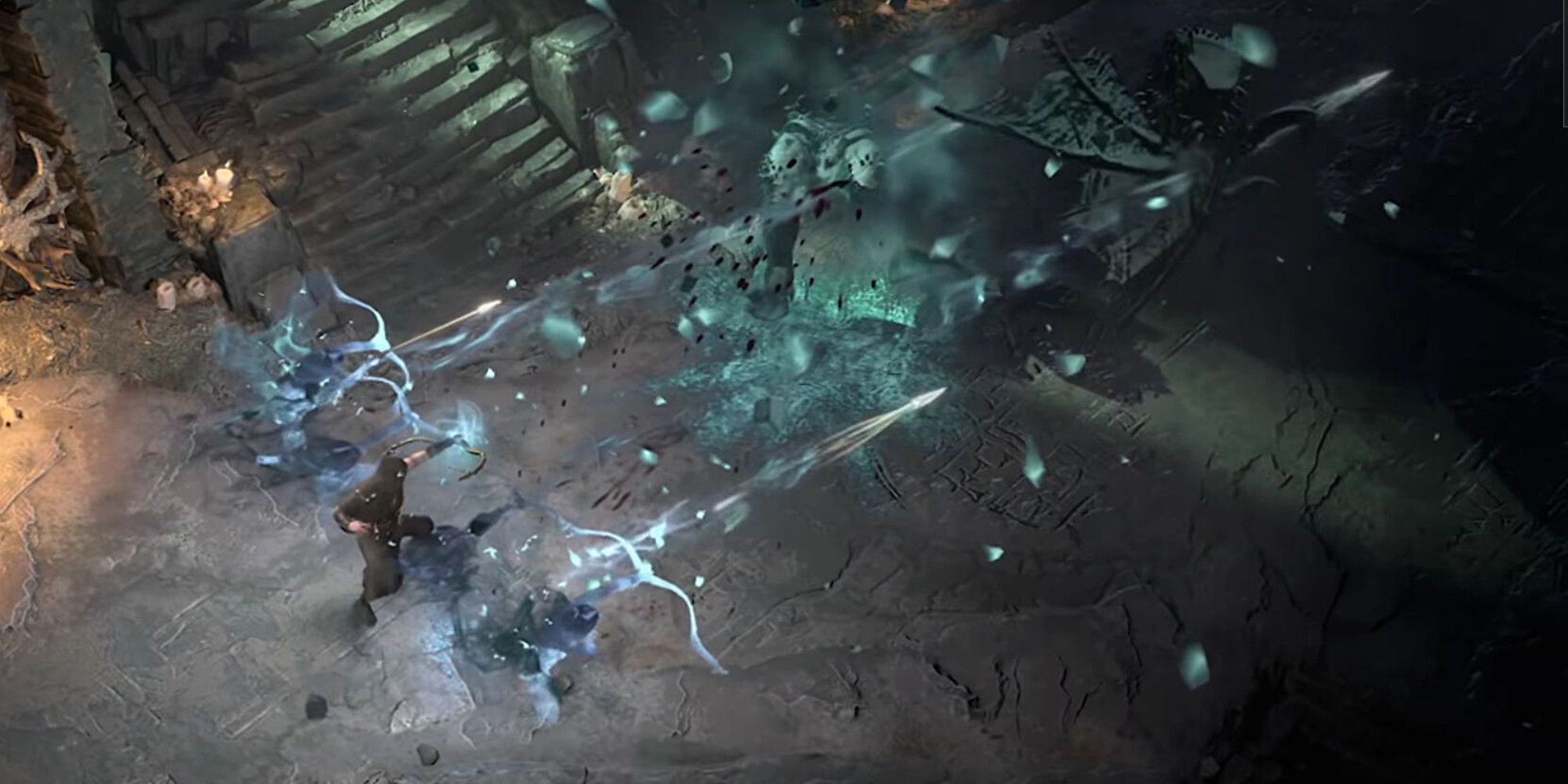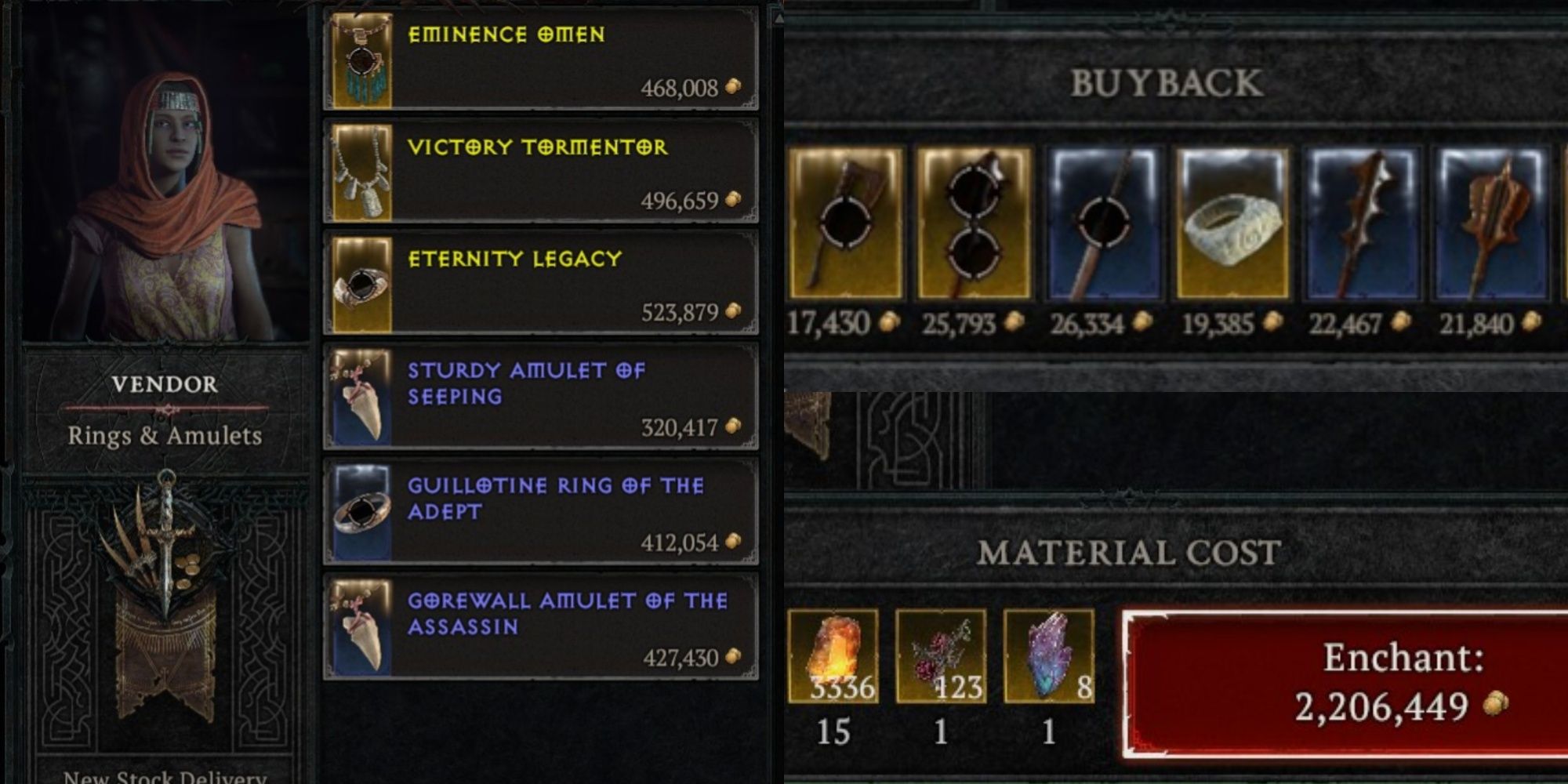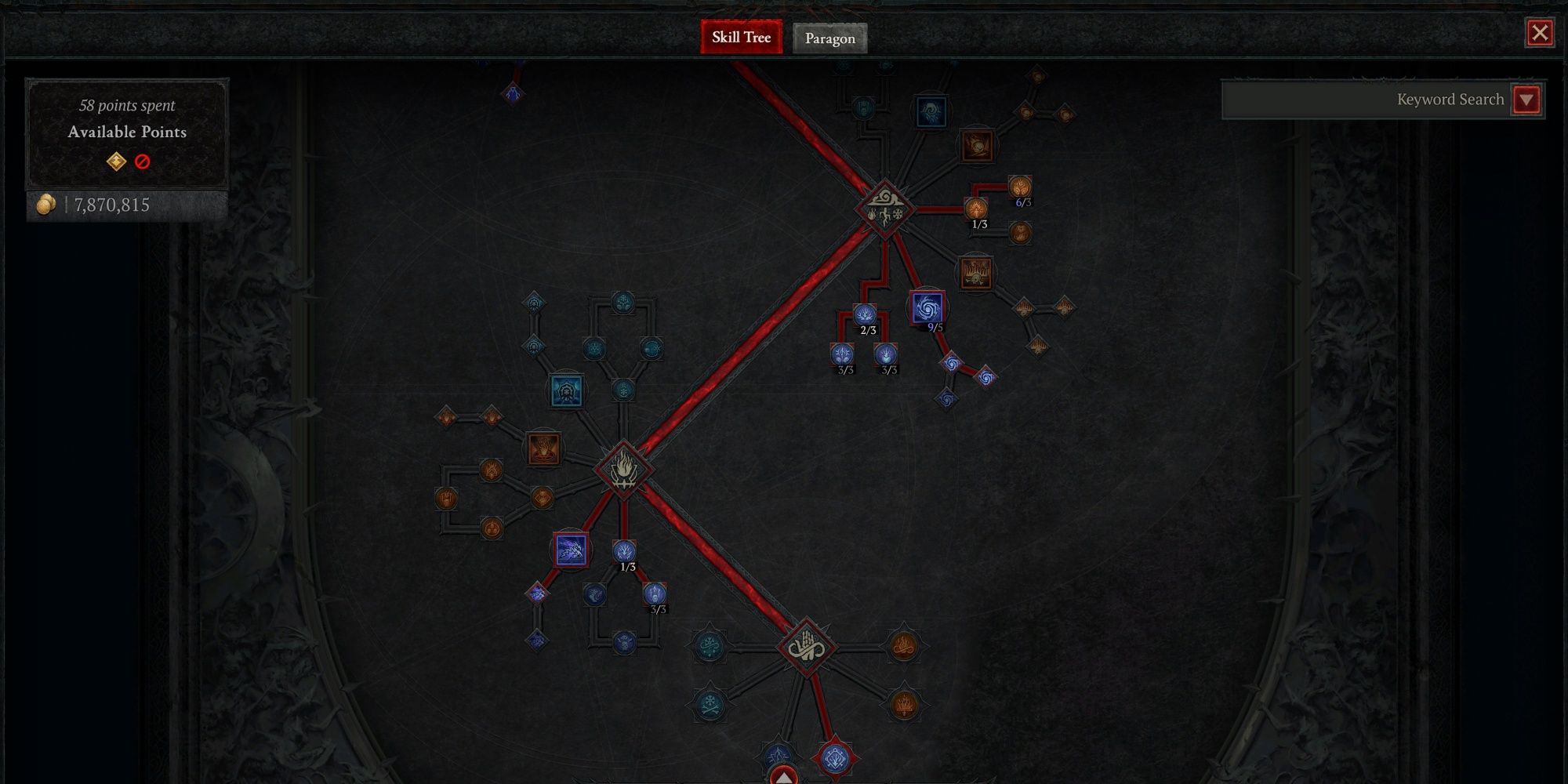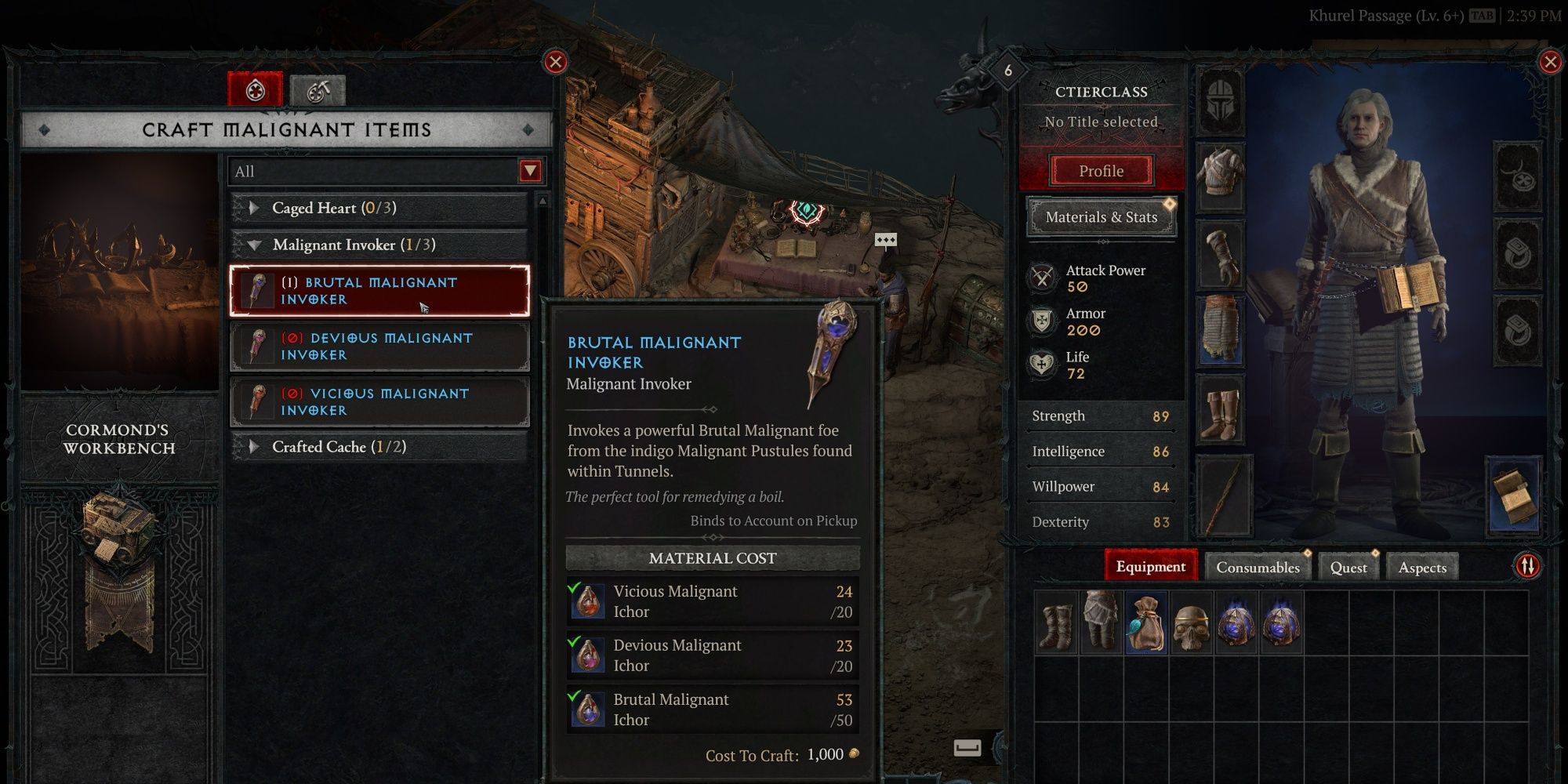When it comes to the hellishly fun ARPG that is Diablo 4, it can be easy to be reckless and fall into some ill-advised habits. While the point-and-click mechanics are fairly accessible, the game subtly injects much depth, customization, and strategy that can be tough to fully grasp, especially for newcomers to the series.
The game bombards you with a slew of unique monsters, tons of quests and dungeons, and a handful of distinct classes to tinker with. Not only this, but Blizzard promised to bring various additions and tweaks via seasonal updates. Given all these factors, some mistakes and blemishes are almost guaranteed to rear their heads even amongst the most seasoned demon slayers. Here are some to look out for.
6 Spamming The Same Basic Attacks
It can be easy to fall back into a sort of autopilot when clashing with the countless creatures, ghouls, and demons of Diablo 4, causing you to opt for the same one or two basic attacks. While repetitively swinging away or picking off targets can work well enough for smaller or weaker foes, you may quickly find yourself run over by a unique or Elite enemy.
As such, you'll want to respond accordingly and mix up your battle plan. Adaptation is often the key to succeeding and being resourceful in a fight. Spamming the same moves can cause some foes to weather the onslaught, get you stuck waiting for cooldowns, or drain Essence too quickly.
An effective Necromancer, for instance, may want to mix in more debuffs or curses for beefier foes to soften them up, or Bone Prison for speedier ones to isolate and trap them.
5 Using The Best Gear Without Factoring Your Build
It can be tempting to continually swap out weaker equipment with more statistically potent gear, and this often works well enough. However, you'll sometimes need to weigh the pros and cons, and you may find it more lucrative to stick with a statistically lesser piece depending on its other perks.
This is often the case when it comes to gear that tacks on additional Skill Points for Skills you favor, or greatly raises a favorable core stat — like Strength for Barbarians.
A spell-heavy Sorcerer, for instance, may want to hang onto headgear that brings dozens of points in Intelligence, even if it falls a bit short with a few other stats. Depending on your build, these more focused perks can sometimes be more beneficial rather than just opting for gears that have the highest raw stats or currency value.
And of course, you can extend the longevity of preferred gear by upgrading it at the Blacksmith or Imprinting Aspects via the Occultist.
4 Shying Away From Respecting Your Skill Tree
Even with the relatively clean Skill Tree in Diablo 4, some may find the various branches and nodes rather intimidating, thus sticking with a select few pathways and rarely tinkering with their builds, as it may seem "good enough". It's true that respecting generally is not a requirement, at least in the early game and lower difficulties. Yet, you'll likely find it advantageous to do so at least a few times.
A Necromancer, for instance, may want to typically stress power for their minions and golem, but may run into a boss which eviscerates them in a fiery inferno, wiping out most of your effectiveness. In that case, you'd want to (at least temporarily) remove nodes that boost the minions and put more toward personal strength, defense, and damage-dealing spells.
Enemies, bosses, and regions usually prove distinct in terms of traits and hazards, so you'll often want to "read the room" and adjust your skills accordingly. Of course, this shouldn't be used too liberally, as respecing can get costly, but small tweaks here and there can be worth the investment.
3 Not Utilizing Upgrades And Maintainance In Towns
Aside from the essentials of unlocking fast travels and quick heals, it can be easy to fall into the habit of bypassing the bulk of town offerings — and instead gunning for the next dungeon or skirmish. However, it's usually a good idea to "run some errands" at fairly regular intervals, especially when preparing for a tough boss or dungeon. Be sure to repair armor when you've perished, and upgrade gear you anticipate hanging onto for a while.
It's best not to upgrade weaker and early-game armor too much, unless you're looking for a quick boost to overcome a tough hurdle. Rather, focus on upgrades with armor that has potent stats and perks favorable to your build.
Even seemingly-lesser features like the Jewler and Occultist (Codex of Power, imprint legendary Aspects, Nightmare Sigils) can be useful at times. Tasks like refining resources and salvaging gear may not seem like much at first, but over time can make a difference. You may find it's that strong poison-resistant Elixer or reward earned from an NPC in town that gives you that extra edge at a given time.
And don't forget to visit Alchemists to upgrade those potions (available at levels ten, 20, 30, 45, 60, 70, 80, and 90). These can make a big difference in the heat of battle. Basically, you'll want to utilize the different resources and services towns provide — even though some can be easy to overlook or miss.
2 Neglecting Side Quests And Dungeons
Diablo 4 has no shortage of side quests and dungeons scattered throughout Sanctuary. Many are offered by NPCs milling about, and some are even triggered by examining an item or other focal point. Even though the campaign itself is rather large, you should make a point to scour the area for ideal side quests, dungeons, and events that pop up sporadically on the map.
These can yield surprisingly great rewards and extra experience, and can help when trying to score that added skill for a tricky boss. It's especially a good idea to seek out dungeons that offer rewards specifically for your class, as these can be imprinted onto your gear. You may just find one of the best weapons in the game, which you stick with for several levels, came from a dungeon off the beaten path.
And once the campaign is finished and Nightmare (tier 3) is unlocked, you'll want to utilize the extra goodies given in Helltide events and Nightmare Dungeons. There is much peripheral and end-game content with more to come, so take advantage!
1 Charging Into Helltides Alone And Unprepared
Helltides are a fun, intense way to keep the challenge and intrigue going long after you've conquered the campaign, bringing incentive to retread previously explored ground. Still, these limited-time events bombard you with some truly tough monsters to match their hellish motifs.
It's usually a good idea to match up with one or two friends before delving headfirst into these treacherous regions, or at least rendevous with others who will likely already be there fighting. Local events (represented by circles on the map) are a good bet for meeting and combining efforts with others. The same applies to the grueling dungeon, The Cathedral of Light.
At the very least, be sure to be prepared when venturing out solo; be laced with the strongest gear you can find and have it fully repaired, have maxed-out potions, and full Essense.

